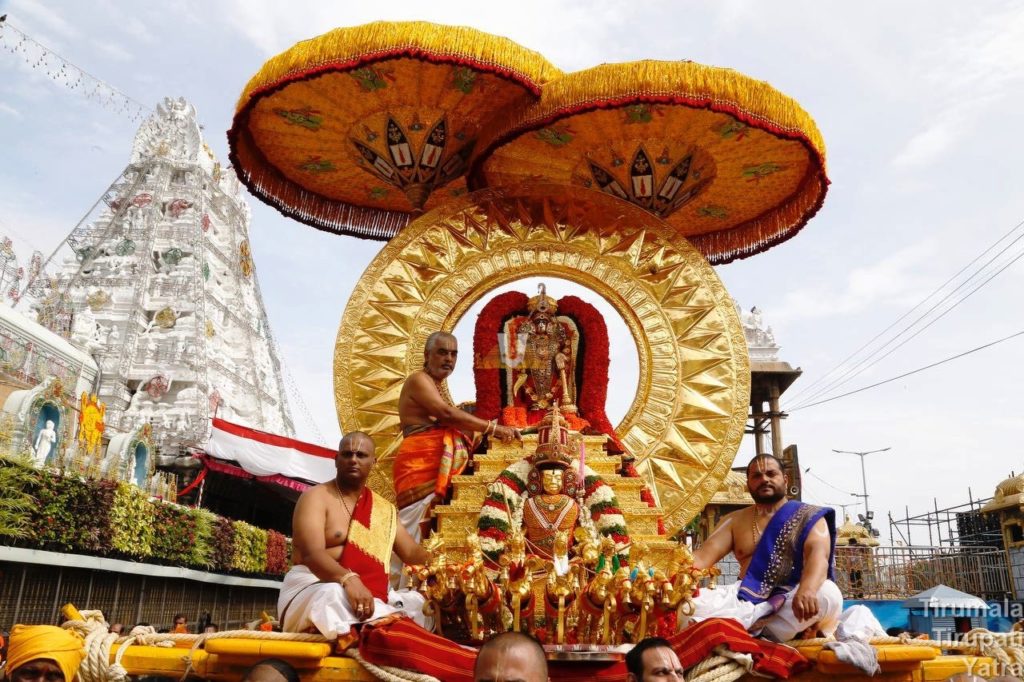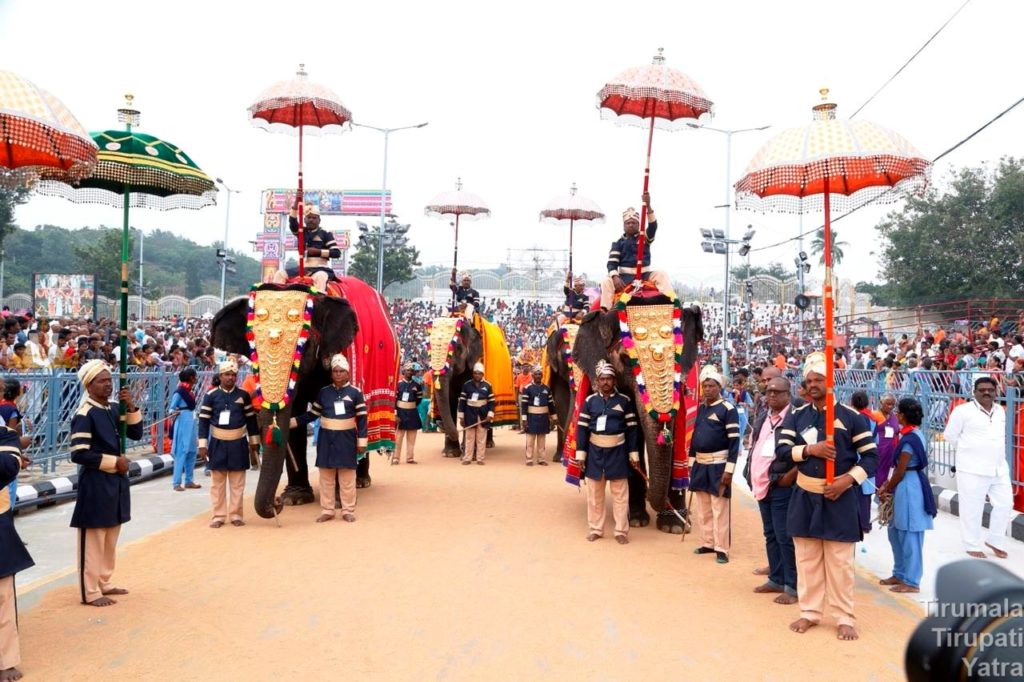Navamam Navaratnamcha Brahma cha Kamalasanah NidhiGrahascha Khandamcha Randhro Bhavascha Labdhakah Navamam, Navaratnam, Brahma, Kamalasana, Nidhih, Grahah, Khanda, Randhra, Bhava and Labdhakah-these ten are the names of number nine. In the Dictionary of Symbols, the name Brahma indicates nine Brahmas and thereby, the number nine. The festival celebrated by Brahma in the name of Sri Venkateswara went Read More
Tag: Brahmotsavam
Although many utsavas are conducted for the Lord throughout the year, the Brahmotsavams which take place for nine days a year assume greatest prominence in the history of Tirumala.
Definition of Brahmotsavam
Brahmotsavam Brahma the creator, with the sun then transiting Virgo (Kanya), the month of Aswayuja as per the Chandramana (the Lunar Calender), fixing Avabhritha (Chakrasnana or the holy dip of the disc) in star sravana, the star of Srimannarayana’s incarnation, having invited divine sages like Vaikhanasa, Bhrigu, and Maricha, as its priests (ritviks), on Suklapaksha Read More


